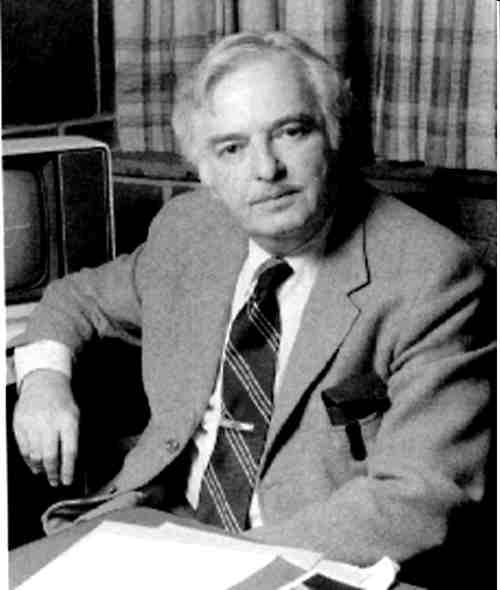| Born This Day In 1926 John Kemeny, Co-Founder of BASIC |
| Written by Sue Gee |
| Tuesday, 31 May 2022 |
|
John Kemeny, born in Hungary on May 31st 1926, was the co-author of BASIC, standing for Beginner's All-purpose Symbolic Instruction Code. Although it is thought of as the popular language of the 1980's, it originated in 1964 at Dartmouth College in New England to introduce computing to undergraduates studying liberal arts and social sciences. You could be forgiven for imagining that Bill Gates and Paul Allen responsible for BASIC since it was Microsoft that brought the language to prominence in the home computing era but in fact it was another duo, John G. Kemeny and Thomas E Kurtz, at Dartmouth College which was, and still is, a university in New England, USA. Dartmouth college involved itself in computing from the early years when computers were primarily the preserve of the military and government and its main concern was finding ways of making computing accessible to its undergraduates. It was Kemeny and Kurtz who pursued at the idea of implementing a time-sharing operating system plus language combination, namely the Dartmouth time-sharing system and BASIC - Beginners All-purpose Symbolic Instruction Code.
John G Kemeny (1926-1992) John Kemeny was born in Hungary but his parents emigrated to the USA in 1940 when he was 12. Clearly the effort of learning English wasn't enough to damage his other studies because he entered Princeton to study maths. This turned out to be more eventful than you might imagine because in his first year he was drafted to the Los Alamos project to help with the project to build the atomic bomb with Richard Fenyman as his boss. This is where he first encountered electronic computers, in the form of a large room full of IBM calculators! It took weeks to solve even a simple numerical problem. During graduate school at Priceton, Kemeny was of the many research assistants to Albert Einstein, yes THE Albert Einstein. "People would ask - did you know enough physics to help Einstein? My standard line was: Einstein did not need help in physics. But contrary to popular belief, Einstein did need help in mathematics. By which I do not mean that he wasn't good at mathematics. He was very good at it, but he was not an up-to-date research level mathematician. His assistants were mathematicians for two reasons. First of all, in just ordinary calculations, anybody makes mistakes. There were many long calculations, deriving one formula from another to solve a differential equation. They go on forever. Any number of times we got the wrong answer. Sometimes one of us got the wrong answer, sometimes the other. The calculations were long enough that if you got the same answer at the end, you were confident. So he needed an assistant for that, and, frankly, I was more up-to-date in mathematics than he was." Kemeny spent many hours checking Einstein's calculations and said: "if we both got the same answer then the chances were overwhelming that it was right". Having earned a Ph.D. in mathematics in 1949 after completing a doctoral dissertation, titled "Type-theory vs. set-theory", under the supervision of Alonzo Church, Kemeny was appointed to the Dartmouth Mathematics Department as a full professor in 1953, at the age of 27. Two years later he became chairman of the department, and held this post until 1967. He was president of Dartmouth College from 1970 until his death from heart fauilre in 1980 at the age of 66. Kemeny introduced finite mathematics courses at Dartmouth and teamed with colleagues to write three textbooks Introduction to Finite Mathematics (1957), Finite Mathematical Structures (1959) and Finite Mathematics with Business Applications (1962). Kemeny also produced two titles on Markov Chains. He teamed with J. Laurie Snell to publish Finite Markov Chains (1960) and with by Anthony W. Knapp for Denumerable Markov Chains (1966). Due to being deemed important and relevant these two books have been republished. Kemeny's book Man and the Computer (1972) on the other hand is listed on Amazon as Currently unavailable. Related ArticlesKemeny & Kurtz - The Invention Of BASIC Historical Highway Marker Celebrating BASIC The Rise Of People Power - Computer Languages in the 1970's To be informed about new articles on I Programmer, sign up for our weekly newsletter, subscribe to the RSS feed and follow us on Twitter, Facebook or Linkedin.
Comments
or email your comment to: comments@i-programmer.info |
| Last Updated ( Tuesday, 31 May 2022 ) |



